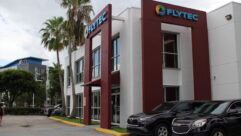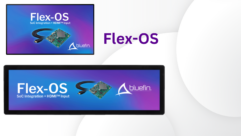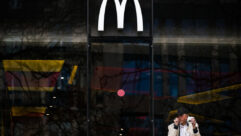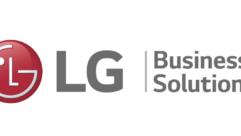Signage Boom Creating Openings for Fiber-Savvy Integrators?
May 9, 2007 8:00 AM,
By John McKeon
One of the hottest and most potentially profitable segments of the professional AV market could well turn out to rely more than most other applications on well-designed fiber-optic networks.
Digital signage, which has been forecast as a boom market for a number of years now, may be on the verge of finally breaking out. A growing number of retail and other implementations have begun to demonstrate persuasive return on investment, and more and more creative and marketing departments are exploring ways to integrate dynamic signage with other forms of promotion.
Most of all, the displays are proliferating in all kinds of settings. Industry research specialist iSuppli predicts, “The digital signage and professional displays market is set to grow to US$14.6 billion by 2011, managing a compound annual growth rate (CAGR) of 9.8 percent, up from US$9.1 billion in 2006.”
iSuppli adds, “Moreover, it is the unit growth that is the impressive part of the market. Unit growth in the digital signage market will hit 22.7 million units by 2011, rising at a CAGR of 42.2 percent from 3.9 million units in 2006, a nearly sixfold increase.”
Unit sales are projected to skyrocket in large part because prices are dropping so steeply. It’s the rapid price decline in both the recent past and the near future that will contribute the most to making high-end video displays ubiquitous in retail, transit, outdoor, sports, corporate, and other digital signage venues.
These cheaper-than-ever displays have another quality that will promote use of fiber and impact the fiber-savvy AV integrator: They’re HD. Displays offering 720p or better resolution are on their way to becoming standard.
Leading equipment manufacturers in the AV industry, including firms like Extron Electronics, have begun marketing new video extenders designed to support fiber-optic signal distribution over long distances.
The surge in device sales is only the beginning for the fiber and pro AV segments, though. All of these devices need content, and moving HD video content around a network takes a lot of bandwidth.
The Video Electronics Standards Association (VESA) has recently released an update of its DisplayPort standard, which it believes will supplant the Digital Video Interface (DVI) standard for connecting video sources and displays. The new version of DisplayPort is the first to explicitly recognize hybrid devices like fiber-optic transceivers as a standard alternative to copper cabling.
Eileen Robarge, group leader for the DisplayPort Hybrid Device subgroup, comments, “Optical technology, particularly single-mode technology, can most effectively address the longer-reach market needs for digital signage, projectors, imaging, quiet office, and digital home, and support much higher-performance picture quality for the end user at both short and longer distances.”
High data capacity means fiber can carry HD video without compression, maintaining high quality and enabling large numbers of displays to be served from a central computer facility, eliminating the need for each display to have its own content player. Fiber’s immunity to electromagnetic interference is another big plus, particularly in indoor settings where radiation sources may be plentiful. Fiber also resists disruption from power surges, which can make it more attractive to operators of outdoor billboard networks.
Inexpensive equipment, high-bandwidth demands, emphasis on quality and reliability—all of these factors may help make digital signage a crucial market for the AV integrator who’s comfortable working with fiber.










